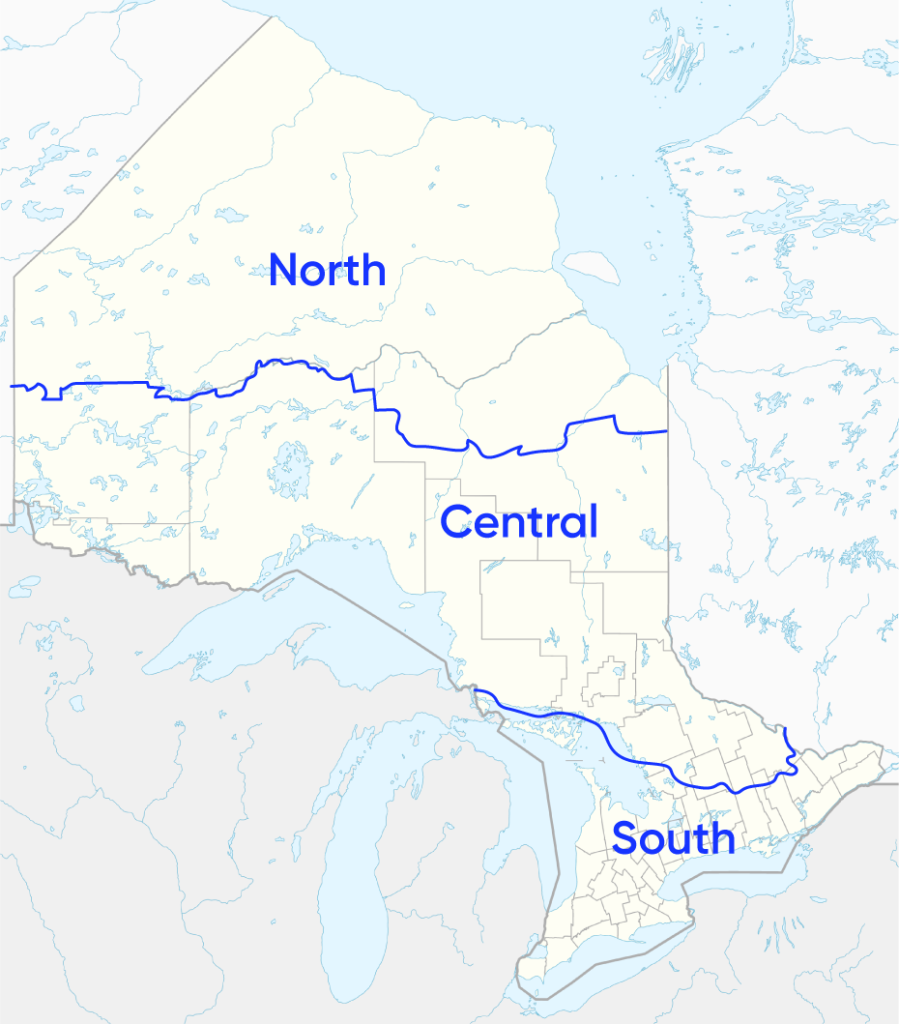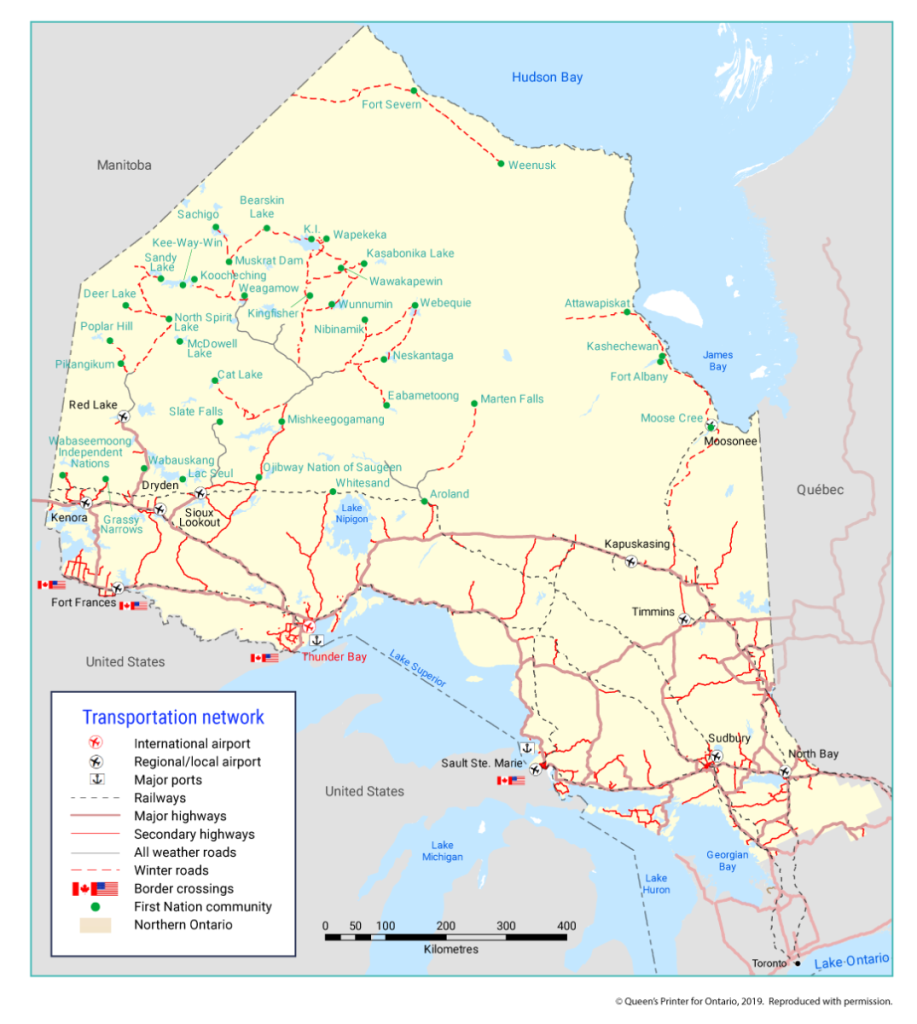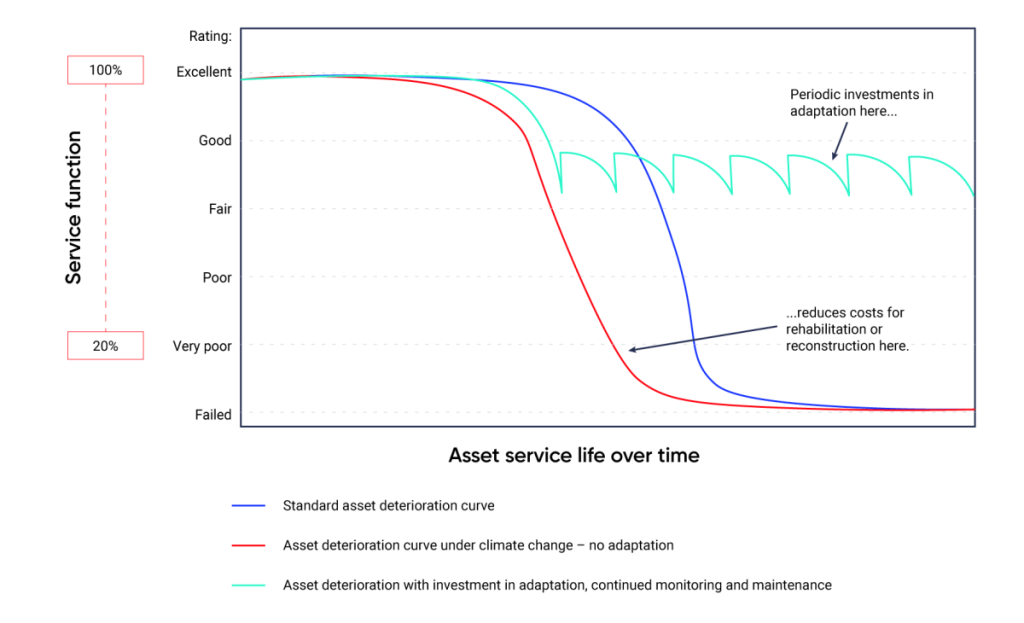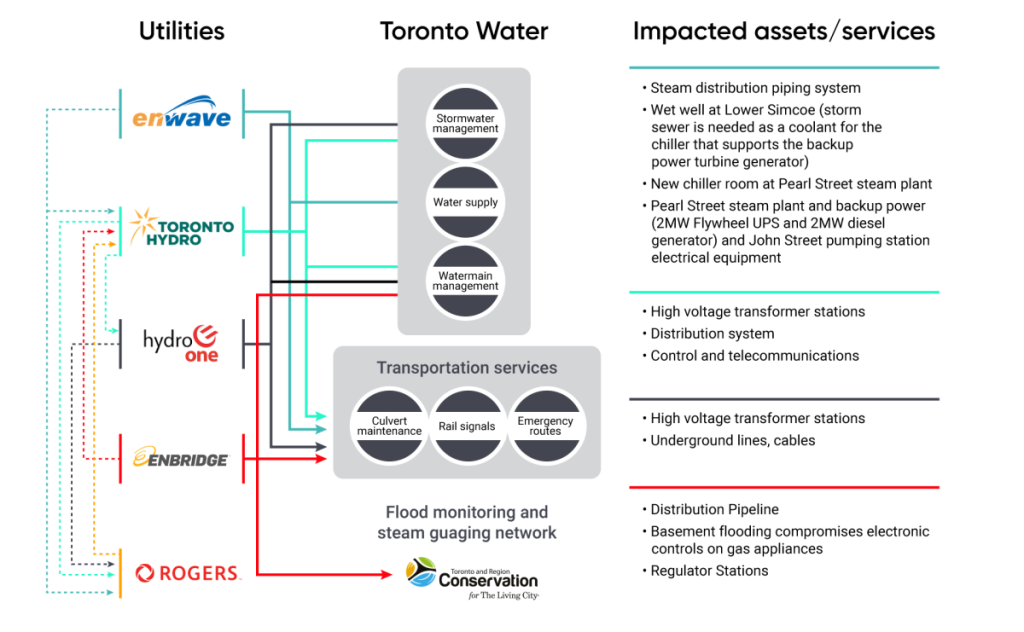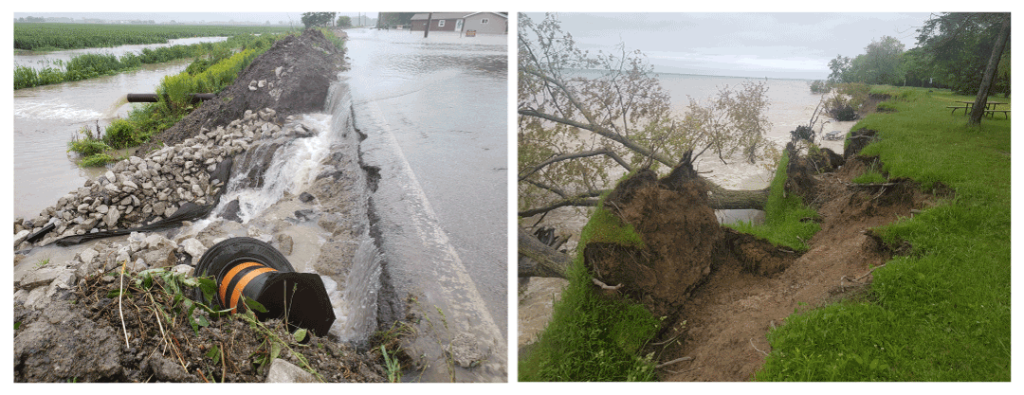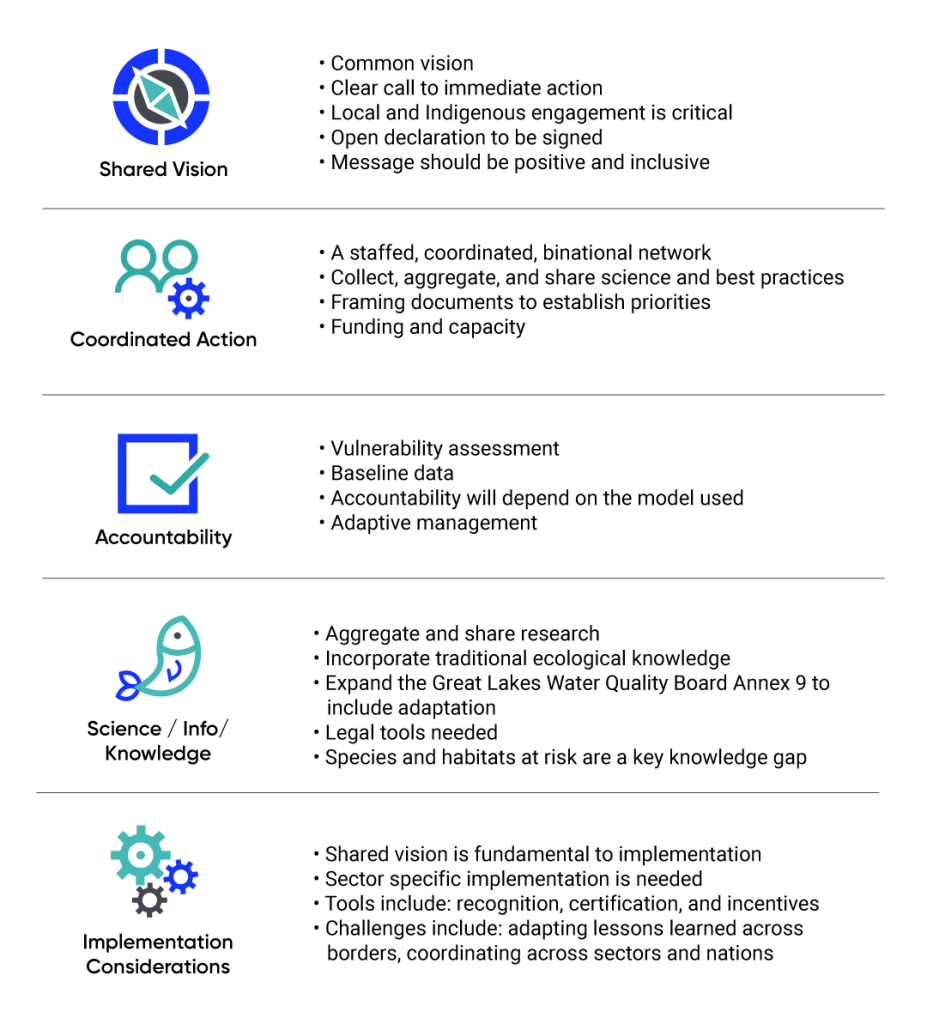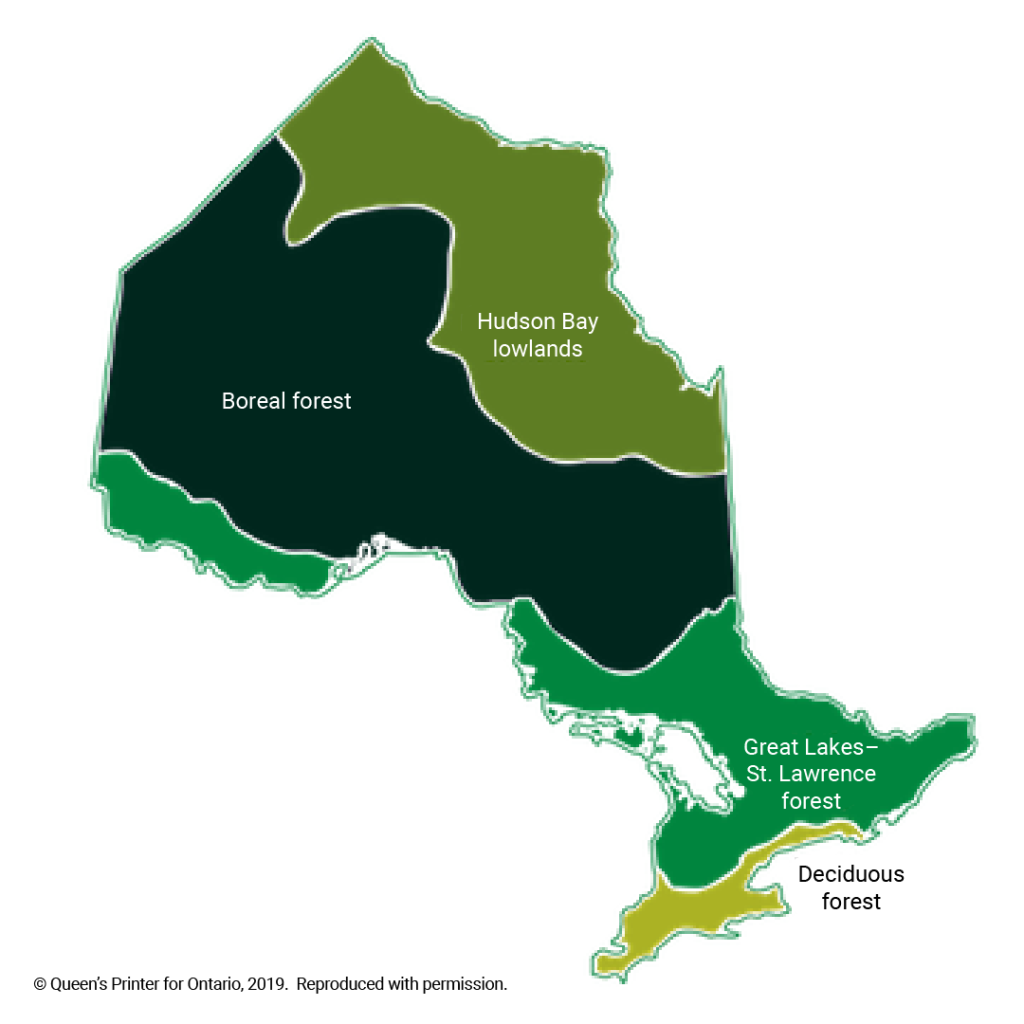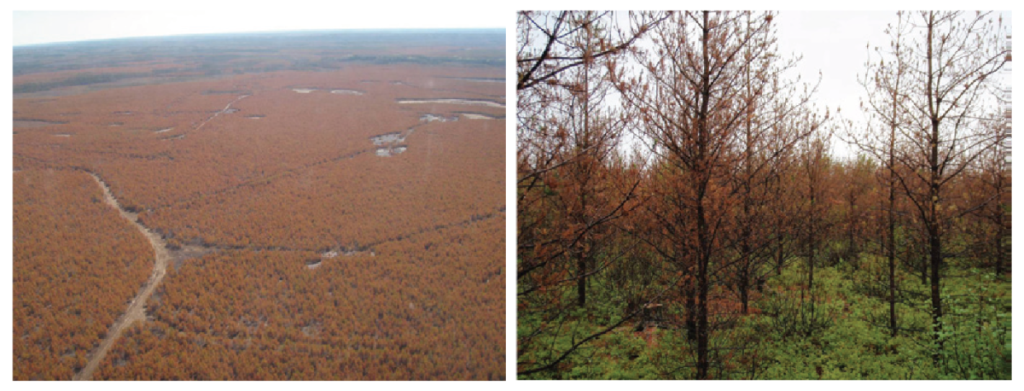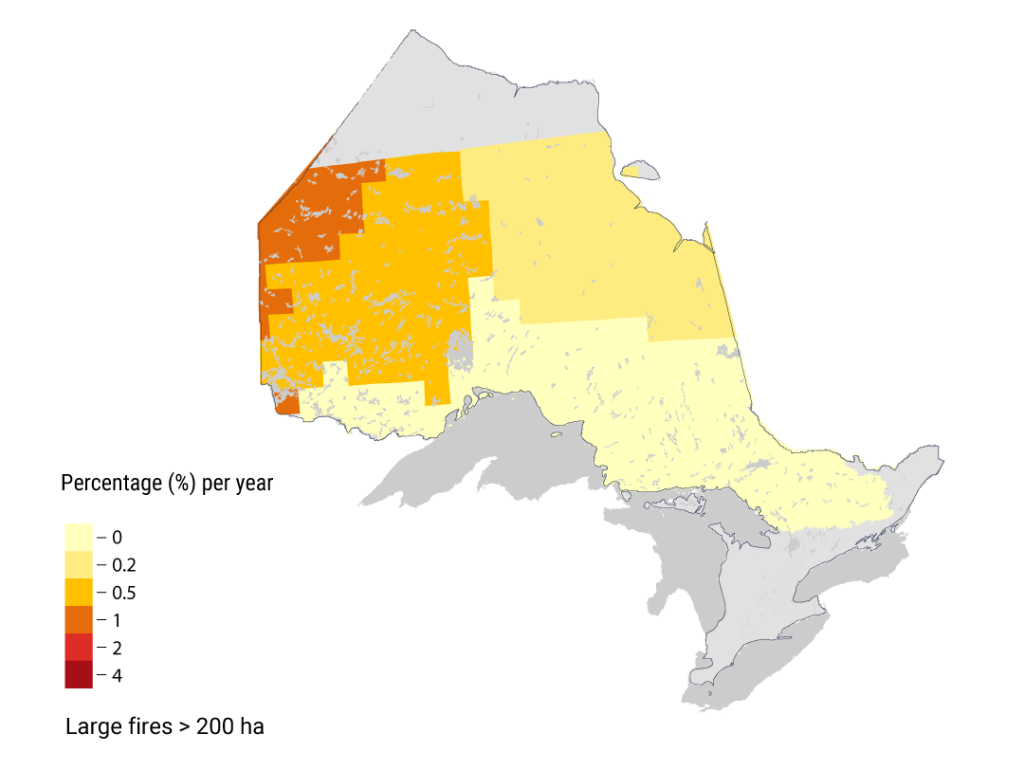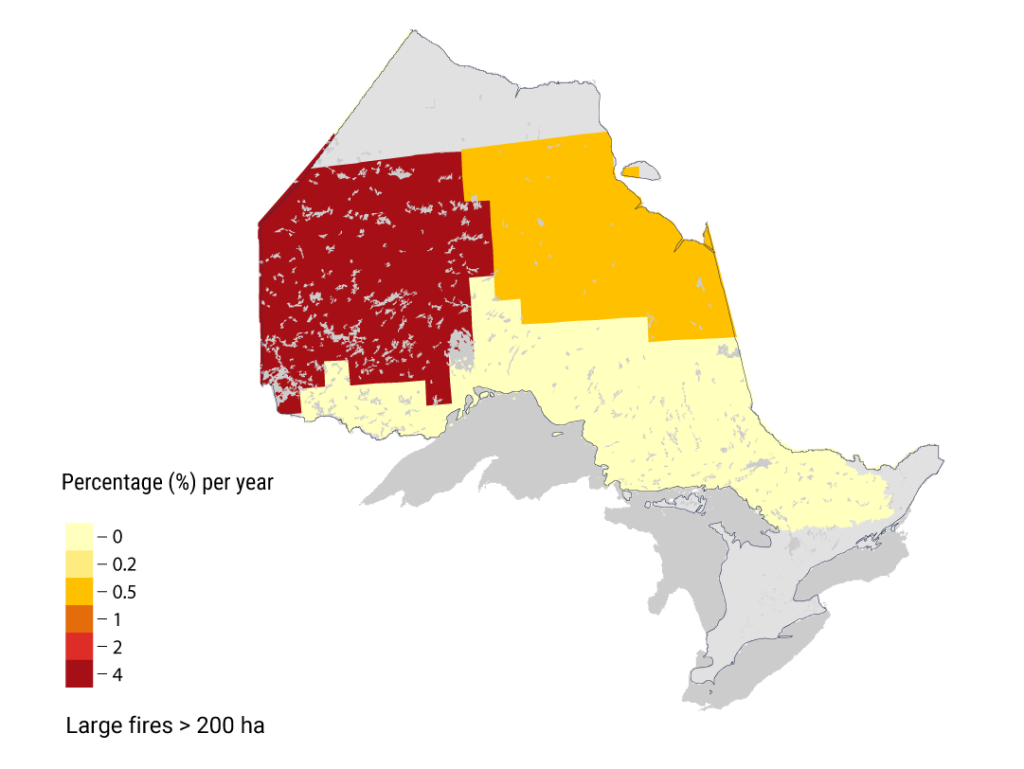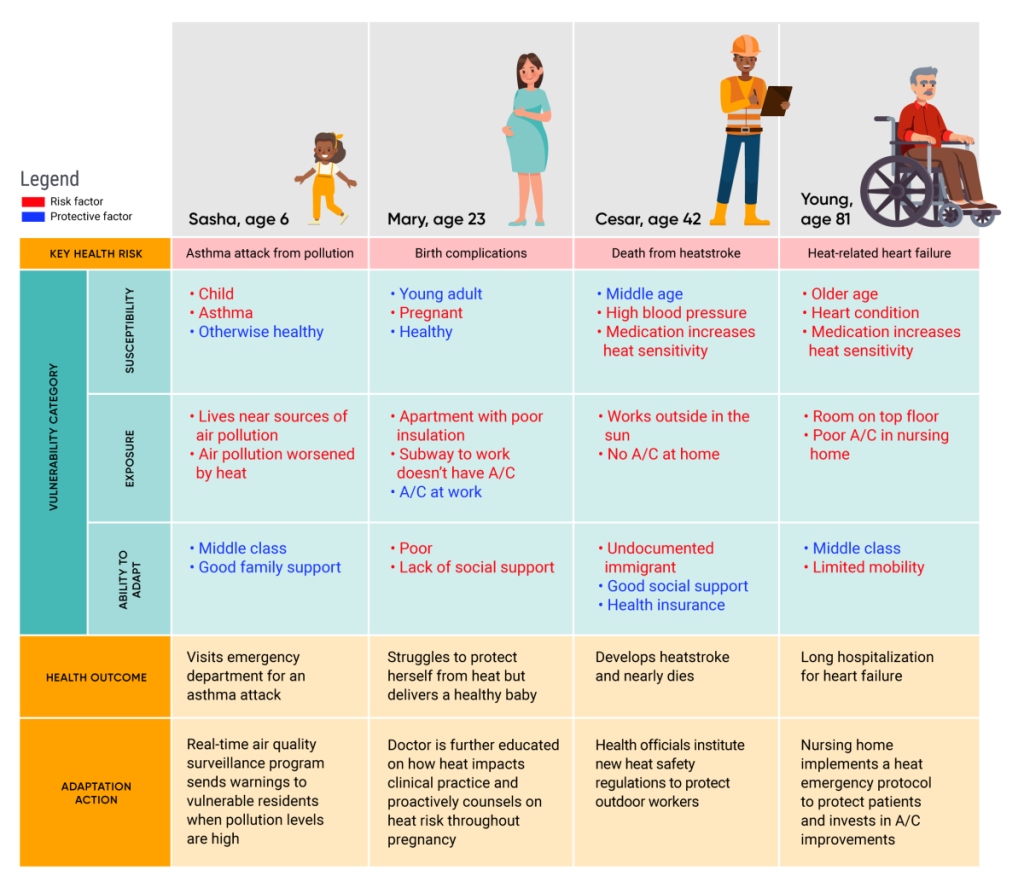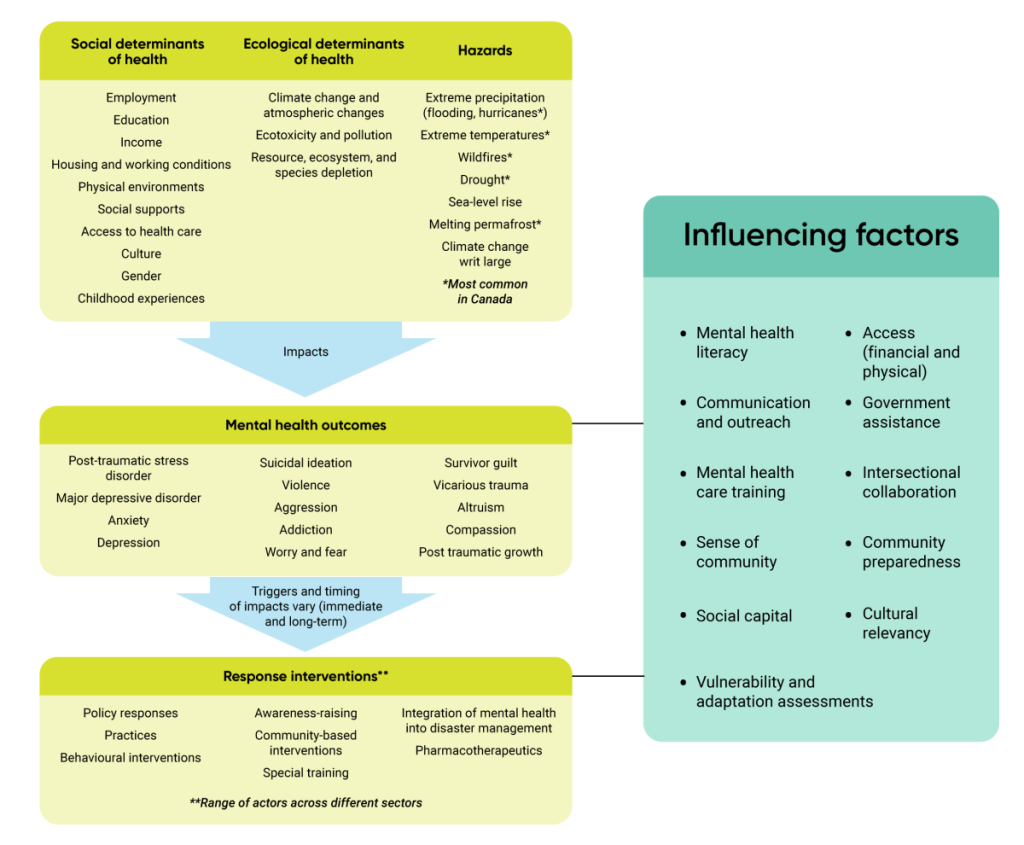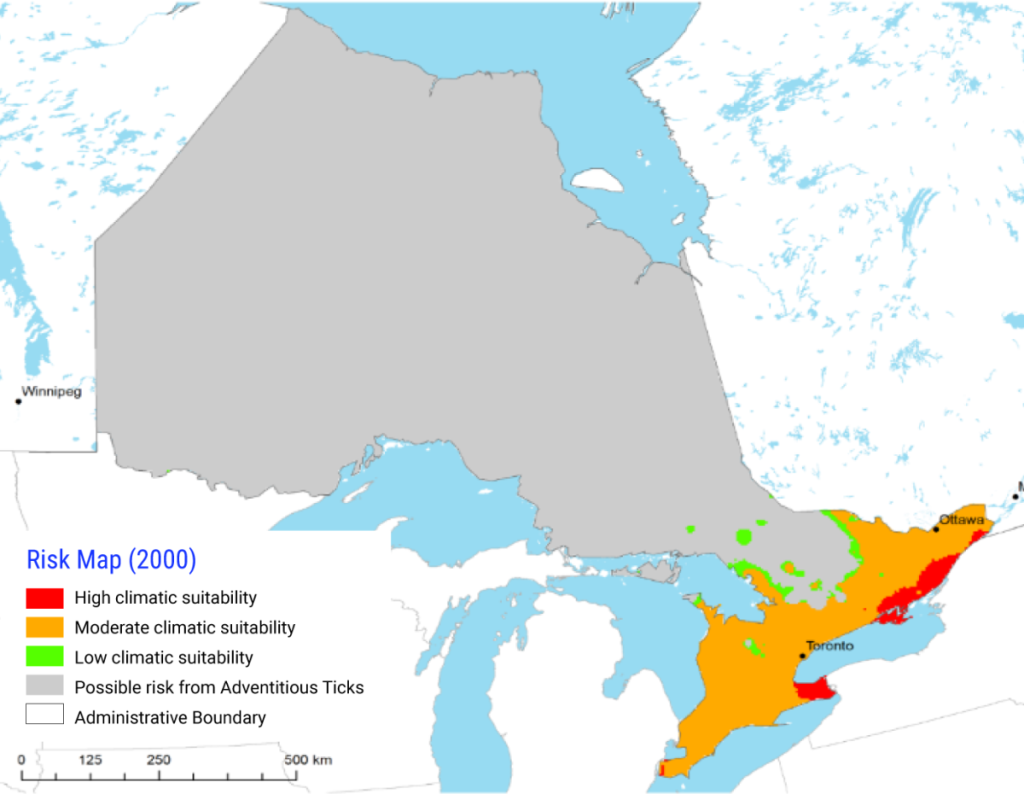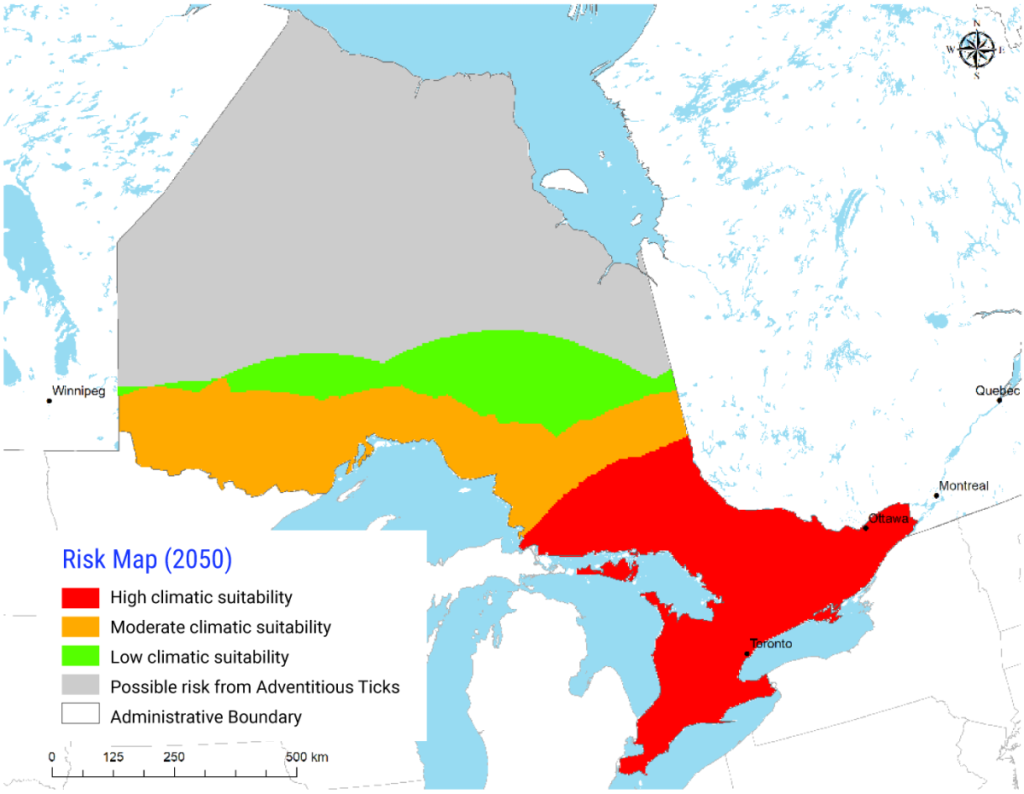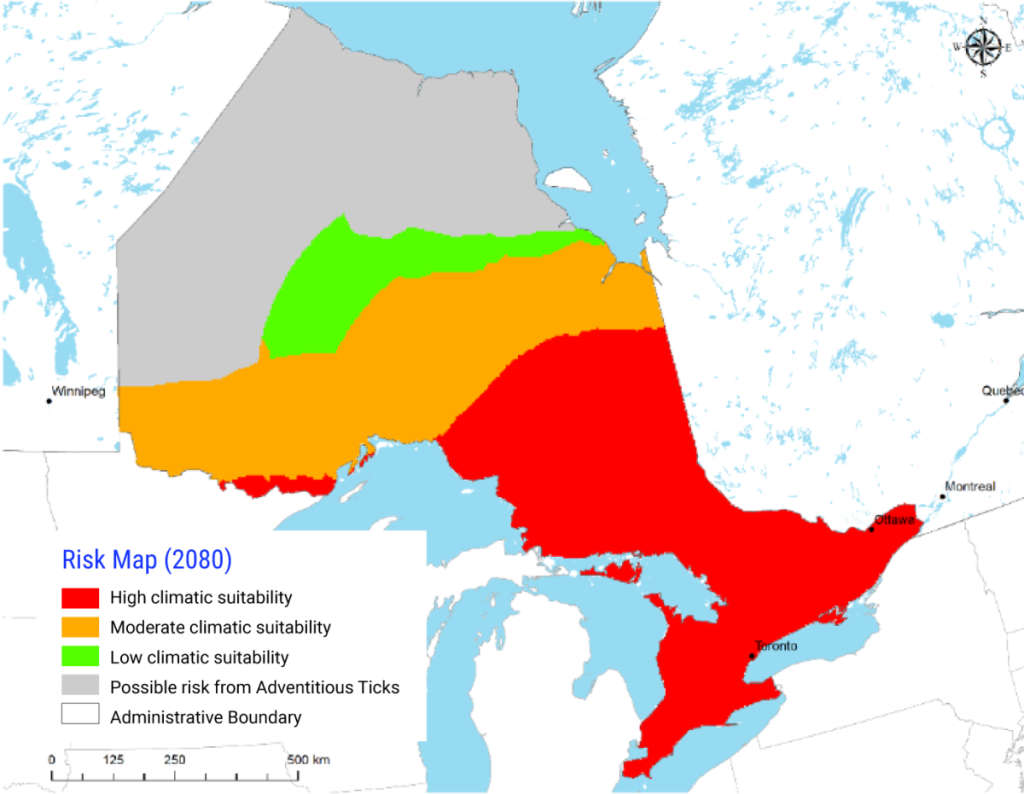The Great Lakes directly influence and regulate the regional weather by moderating seasonal temperatures and generating local precipitation through lake effects (Mortsch, 2016; McDermid et al., 2015b; Gula and Peltier, 2012). In recent years, the impacts of changing climate have been manifested through changes in ice cover and water temperatures, (Zuzek, 2020; Bonsal et al., 2019; Derksen et al., 2019; Byun and Hamlet, 2018; Di Liberto, 2018). Changes in ice cover and water levels have been assessed as part of this assessment (see the Changes in Snow, Ice, and Permafrost Across Canada chapter and the Changes in Freshwater Availability Across Canada chapter of Canada’s Changing Climate Report).
Warming air temperatures contributed to a 71% decline in annual average ice cover across the Great Lakes in the period from 1973 to 2010, with the greatest declines occurring in Lake Ontario, Lake Superior and Lake Michigan (Derksen et al., 2019; Mason et al., 2016; Wang et al., 2012). Heavy ice cover occurring in 2014, 2015 and 2018 obscured any apparent trend, such that the record is marked by high inter-annual variability, but no long-term trend (see Figure 3.10; Derksen et al., 2019). Projections of future ice cover for Lake Ontario and Lake Erie indicate near ice-free conditions by the middle to the end of the 21st century under the RCP 8.5 scenario (Zuzek, 2020; Hewer and Gough, 2019). Seasonal ice cover is an important factor influencing wave formation, shoreline erosion, evaporation and lake levels (Zuzek, 2020; Zuzek, 2019; Lenters et al., 2013).
Water levels of the Great Lakes have fluctuated over the past century, driven by natural variability, human interventions (e.g., detention diversions) and climate change. Both record low and record high levels have been experienced over the past few years. From 1998 to 2013, lower than average water levels were experienced across the lakes, with notable lows in Lake Michigan and Lake Huron during the winter of 2012/2013. These lows were followed by a rapid increase in water levels starting in 2014, largely attributed to decreased evaporation rates and increased regional precipitation (Derksen et al., 2019; Gronewold et al., 2016). In July 2019, each lake was observed to be near or above record-high water levels, with Lake Superior, Lake Erie and Lake Ontario hitting record-high values (see Table 3.3). The high water levels accelerated shoreline erosion and caused flooding events throughout the summer of 2019 (Seglenieks and Caldwell, 2019). It is expected that year-to-year and multi-year variability in lake levels will remain large, with potential for an increase in ranges (Bonsal et al., 2019; McDermid et al., 2015b; Gronewold et al., 2013; MacKay and Seglenieks, 2013). Extreme and unpredictable water levels are associated with significant economic costs (e.g. Shlozberg et al., 2014), such that management for both extreme high and low water levels along Ontario’s shorelines will be required moving forward.
Annual surface water temperatures of the Great Lakes have increased by between 0.02°C and 0.06°C per year since 1980 (United States Environmental Protection Agency and Environment and Climate Change Canada, 2021). The trend has been gradual but steady, with recent increases being driven by warming during the spring and summer months (NOAA, 2021; United States Environmental Protection Agency and Environment and Climate Change Canada, 2021). Surface water temperature is influenced by many factors, including regional air temperatures, solar radiation and ice cover conditions from the previous winter (United States Environmental Protection Agency and Environment and Climate Change Canada, 2021; Zhong et al., 2016). While water temperature projections are more complex compared to air temperature projections, models indicate that surface water temperatures across the Great Lakes will continue to warm under a changing climate (Wuebbles et al., 2019; Xiao et al., 2018; McDermid et al., 2015b).
The lengthened ice-free season and increasing surface water temperatures have led to earlier springtime and later fall lake stratification, which extends the period between turnover (Angel et al., 2018; Wuebbles et al., 2019; McDermid et al., 2015b). The physical process of turnover allows for dissolved oxygen and nutrients to be circulated and vertically mixed. As the duration between overturning events lengthens, there is less vertical mixing of dissolved oxygen and nutrients, which impacts water quality and biological function (Anderson et al., 2021; Xiao et al., 2018; McDermid et al., 2015b). During the warm winters of 2012 and 2017, surface water temperatures in parts of Lake Ontario did not fall below 4°C (the maximum density of water), such that the overturn process was not initiated, resulting in inadequate oxygen and nutrient mixing (Wuebbles et al., 2019; Angel et al., 2018; McDermid et al., 2015b). Longer periods between stratification can be detrimental for cold-water species, as the latter are pushed closer to the surface to obtain adequate oxygen, but then challenged by unsuitable thermal conditions (Collingsworth et al., 2017; Lynch et al., 2016; Dove-Thompson et al. 2011; Minns et al. 2011).
Warming surface water temperatures, coupled with increased nutrient and sediment runoff from land-use changes (urban development, loss or conversion of wetlands, etc.), provide optimal conditions for algae growth, increasing the likelihood and magnitude of algal bloom events (Wuebbles et al., 2019; McDermid et al., 2015b; d’Orgeville et al., 2014). Cyanotoxins within algal blooms can have significant human health impacts. Without adequate drinking water filtration systems, or through accidental exposure, these toxins can cause a variety of symptoms, such as abdominal pain, nausea, vomiting, diarrhea, sore throat and dry cough (Chorus and Bartram, 1999). Lake Erie, the shallowest of the Laurentian Great Lakes, has been particularly vulnerable to algal blooms and has experienced declining water quality in recent years as surface water temperatures and nutrient loading have increased (Wuebbles et al., 2019; d’Orgeville et al., 2014). Continued warming water and nutrient loading from agriculture operations suggest that the prevalence of algal blooms could further increase. To address this risk, the 2018 Canada-Ontario Lake Erie Action Plan identified more than 120 actions to help achieve the goal of reducing phosphorus entering Lake Erie by 40 per cent by 2025 (Environment and Climate Change Canada and the Ontario Ministry of the Environment and Climate Change, 2018).
The Great Lakes Basin provides habitat for more than 3,500 plant and animal species, including all three thermal guilds of fish species (cold-, cool- and warm-water species), as they co-exist in thermally stratified waters (Wuebbles et al., 2019; Milner et al., 2018a). Climate change impacts exacerbate non-climate ecological threats, such as habitat loss, pollution and invasive species resulting from human activity (Mortsch, 2016; McDermid et al., 2015b). These impacts will increase risks to fish, migratory birds and other native species that rely on healthy and resilient aquatic and coastal ecosystems (International Joint Commission Great Lakes Water Quality Board, 2017; Chu, 2015; McDermid et al., 2015b).
The physical impacts to the Great Lakes are projected to influence aquatic ecosystem function, impacting a range of processes, including nutrient cycles and uptake, phenological cues, lake productivity and turbidity and substrate conditions (Collingsworth et al., 2017; Alofs et al., 2014). Research indicates that the composition of fish communities in the Great Lakes will change as cold-water habitat becomes limited for native cold-water fish species and warm-water species expand their ranges northward (Collingsworth et al., 2017; Alofs et al., 2014; Sharma et al., 2008; 2007). There are several factors that could compound these impacts, including predator-prey mismatches, metabolism and growth rates of fish species, altered dissolved oxygen availability, and an increased incidence of disease, pathogens and invasive species (see Section 3.3; Collingsworth et al., 2017; Chu, 2015; McDermid et al., 2015b).
Changing lake dynamics and warming temperatures will increase the risk for the introduction of new species and the expansion of existing, invasive species (e.g., sea lamprey, zebra and quagga mussels, and phragmites), pathogens and diseases, as ranges shift northward (Wuebbles et al., 2019; Chu et al., 2015; McDermid et al., 2015b; Pagnucco et al., 2015). Coastal wetlands within the Basin have been labelled as some of the most vulnerable ecosystems to climate change in southern Ontario (see Section 3.3; Environment and Climate Change Canada, 2021; Chu, 2015; McDermid et al., 2015b).

